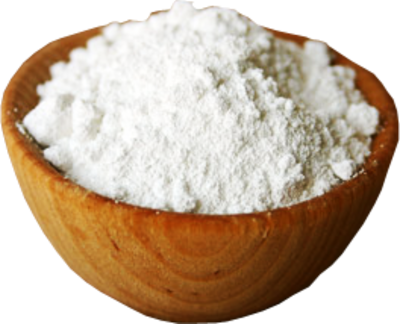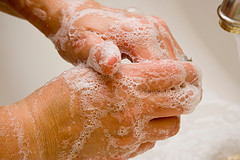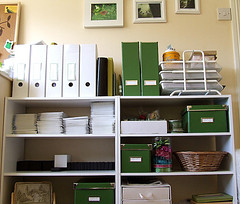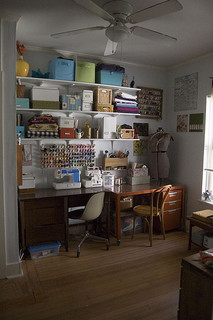As the back-to-school season approaches, many families are focused on preparing for a smooth transition. From buying school supplies to organizing schedules, there’s a lot to think about. However, one important aspect that often gets overlooked is making sure your home is allergy-proof. With the increase in outdoor activities and the return to classrooms, allergens like dust, pollen, and pet dander can easily find their way into your living space. This guide will walk you through comprehensive steps to allergy-proof your home, ensuring a healthier environment for your family.
1. Start with a Deep Clean
The foundation of any allergy-proofing effort is a thorough deep clean of your home. Dust, mold spores, and pet dander can accumulate in the corners, under furniture, and in areas you might not clean regularly. Begin by moving furniture to clean behind and underneath it, vacuuming carpets, and dusting surfaces, including those often missed like ceiling fans, light fixtures, and baseboards. Use a vacuum with a HEPA filter, as this will trap smaller particles that regular vacuums might release back into the air.
When dusting, opt for a microfiber cloth rather than a feather duster, as the latter tends to scatter dust rather than capture it. Microfiber traps the particles, making it more effective at reducing allergens. Pay special attention to bookshelves, blinds, and other areas where dust can accumulate unnoticed.
2. Control Humidity Levels
Maintaining the right humidity level in your home is crucial for preventing mold growth and dust mites, both of which thrive in humid conditions. Ideally, indoor humidity should be kept between 30-50%. Too much moisture in the air can lead to mold growth, which can trigger allergic reactions and respiratory issues.
Invest in a dehumidifier to help control moisture levels in damp areas of your home, such as basements or bathrooms. Regularly check for signs of mold, especially in bathrooms, kitchens, and any area prone to moisture. If you spot mold, clean it immediately with a solution of water and vinegar, which is a natural and effective way to eliminate it without introducing harsh chemicals into your home.
In addition to controlling humidity, make sure to ventilate your home properly. Use exhaust fans in bathrooms and kitchens to remove excess moisture, and consider using an air purifier with a HEPA filter to capture airborne particles, including mold spores.
3. Replace or Clean Air Filters Regularly
Your HVAC system plays a significant role in maintaining air quality, so it’s essential to keep it in top condition. Air filters in your heating and cooling systems trap dust, pollen, and other airborne allergens, preventing them from circulating throughout your home. However, if these filters aren’t replaced or cleaned regularly, they can become clogged and less effective, allowing allergens to recirculate.
Check your air filters every month and replace them at least every three months, or more often if you have pets or if someone in your household suffers from severe allergies. Consider using high-efficiency particulate air (HEPA) filters, which are designed to capture even the smallest particles.
In addition to changing your HVAC filters, clean the vents and ducts regularly. Dust and allergens can accumulate in these areas and then get blown into your living spaces when the system is in use. Hiring a professional to clean your ducts once a year can help reduce the amount of dust and allergens in your home.
4. Focus on the Bedroom
The bedroom is where you and your family spend a significant amount of time, so it’s essential to make it an allergy-free zone. Start by encasing mattresses, pillows, and box springs in allergen-proof covers. These covers prevent dust mites and other allergens from penetrating your bedding.
Wash your sheets, pillowcases, and blankets in hot water at least once a week to kill dust mites and remove allergens. For comforters and other bedding that can’t be washed as frequently, consider placing them in the dryer on high heat for 10-15 minutes to eliminate dust mites.
If you have carpeting in the bedroom, vacuum it regularly with a HEPA-filter vacuum, and consider using a carpet cleaning service that specializes in allergy control. However, if allergies are severe, you might want to consider replacing carpeting with hard flooring, which is easier to keep allergen-free.
5. Manage Pet Dander
Pets are beloved members of the family, but they can also be significant contributors to indoor allergens. Pet dander, which is composed of tiny, even microscopic, flecks of skin shed by cats, dogs, rodents, birds, and other animals with fur or feathers, can trigger allergies and asthma.
To manage pet dander, start by grooming your pets regularly. Brushing them frequently can reduce the amount of dander they shed. It’s best to do this outside to prevent loose dander from spreading indoors. Regular baths can also help, but be sure to use a pet-friendly shampoo that won’t irritate their skin.
In your home, vacuum carpets, rugs, and upholstery frequently, as these can trap pet dander. Again, using a vacuum with a HEPA filter is crucial in preventing the dander from being released back into the air. Consider using washable slipcovers on furniture, which can be removed and cleaned easily.
Allergy-proofing your home for the back-to-school season may seem like a daunting task, but with a systematic approach, it can be manageable and effective. By focusing on deep cleaning, controlling humidity, managing pet dander, and being mindful of pollen and other allergens, you can create a healthier, more comfortable living environment for your family. Implementing these strategies not only helps reduce allergy symptoms but also contributes to a cleaner, more sustainable home overall. As your children head back to school, you can have peace of mind knowing that your home is a safe haven from the allergens that can make this time of year challenging.






